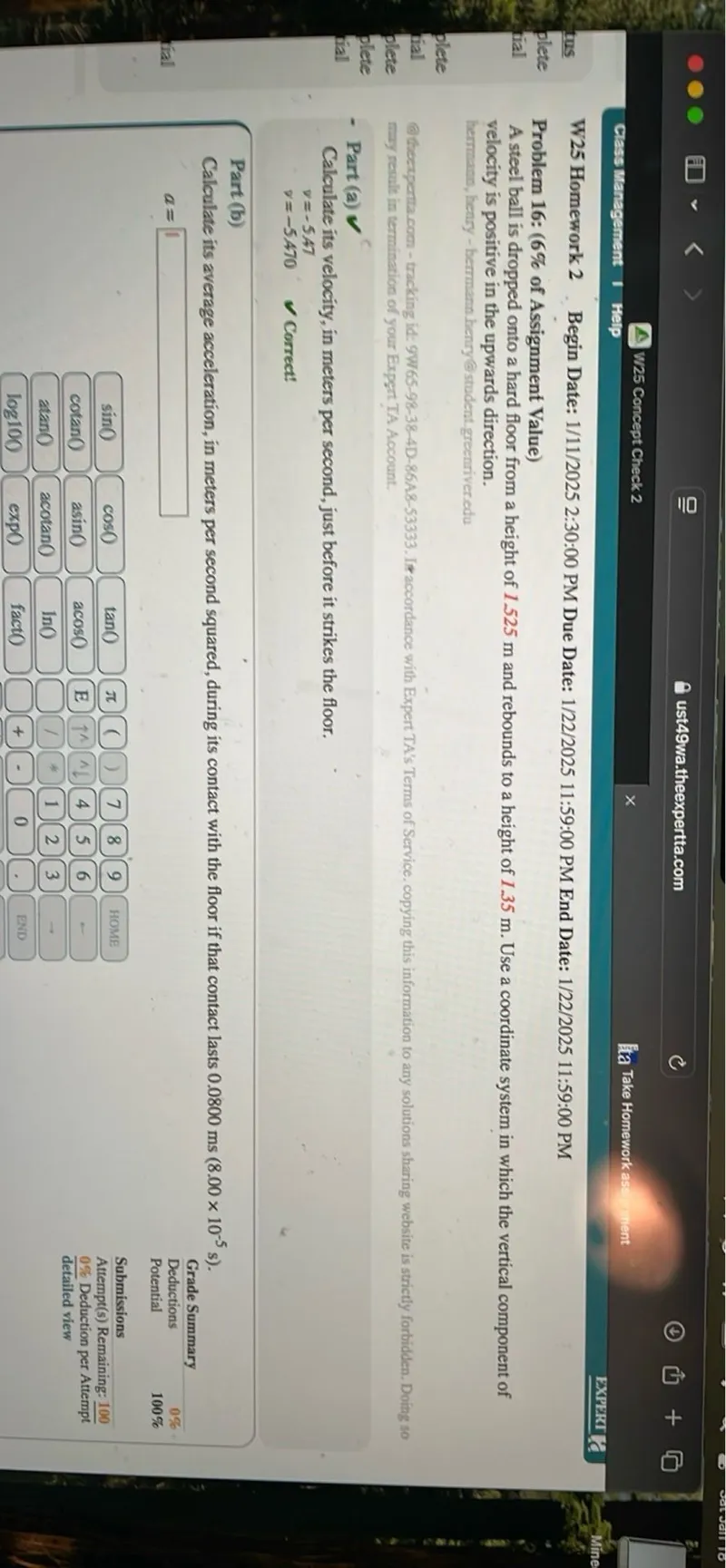Questions: W25 Homework 2 Begin Date: 1/11/2025 2:30:00 PM Due Date: 1/22/2025 11:59:00 PM End Date: 1/22/2025 11:59:00 PM Problem 16: (6% of Assignment Value) A steel ball is dropped onto a hard floor from a height of 1.525 m and rebounds to a height of 1.35 m. Use a coordinate system in which the vertical component of velocity is positive in the upwards direction. - Part (a) Calculate its velocity, in meters per second, just before it strikes the floor. v=-5.47 v=-5.470 Part (b) Calculate its average acceleration, in meters per second squared, during its contact with the floor if that contact lasts 0.0800 ms (8.00 x 10^-5 s). a=

Transcript text: W25 Homework 2 Begin Date: 1/11/2025 2:30:00 PM Due Date: 1/22/2025 11:59:00 PM End Date: 1/22/2025 11:59:00 PM
Problem 16: ( $6 \%$ of Assignment Value)
A steel ball is dropped onto a hard floor from a height of 1.525 m and rebounds to a height of 1.35 m . Use a coordinate system in which the vertical component of velocity is positive in the upwards direction.
- Part (a)
Calculate its velocity, in meters per second, just before it strikes the floor.
\[
\begin{array}{l}
v=-5.47 \\
v=-5.470
\end{array}
\]
Part (b)
Calculate its average acceleration, in meters per second squared, during its contact with the floor if that contact lasts $0.0800 \mathrm{~ms}\left(8.00 \times 10^{-5} \mathrm{~s}\right)$.
\[
a=\square
\]





